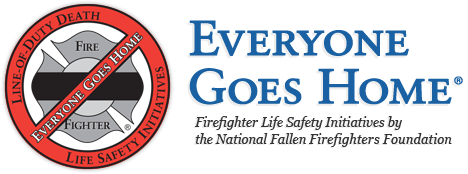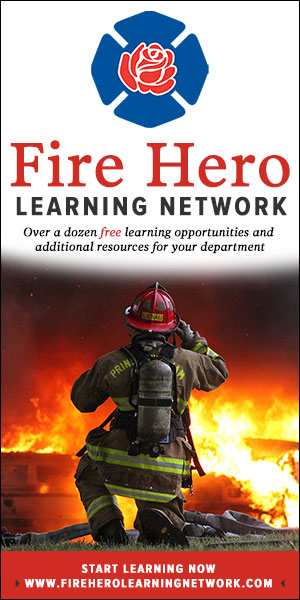
National protocols for response to violent incidents should be developed and championed.
From the beginning of America’s fire service, firefighters have been responding to incidents that were the result of, or caused by, an act of violence. Fire departments respond to a wide range of events from the simple Saturday night altercation at the corner bar, to the events like: Watts, Columbine, Oklahoma City, 9/11, Webster, NY, or Gwinnett County, GA. On most occasions, the fire department responds, renders service, and returns to quarters. Unfortunately, over our history, not every member has been able to return home due to factors associated with violence.
In March 2006, former Peoria (AZ) Fire Department Fire Inspector Howard M. Munding produced a thesis titled “Violence Against Firefighter: Angels of Mercy Under Attack.” In the thesis, he quotes the stunning statistic that an estimated 700,000 assaults occur on paramedics and emergency medical technicians (EMTs) annually. Additionally, according to a 2008 National Fire Protection Association (NFPA) Firefighter Fatality Report, 32 firefighters died from assaults while on duty in the report’s 32-year history. At the end of 2010, that number grew to 34, or one firefighter per year. In order to ensure that we meet our mission, to make sure everyone goes home, we offer the following strategies designed to reduce the likelihood of injury or death from responding to incidents of violence.
- Improved understanding and application of Dynamic Risk Management
- Initiate or improve communication with the local law enforcement component.
- Define and expand role of dispatchers in reducing risk
- Prohibit single (person) resource response to violent incidents
- Require use of an Incident Management System
- Communicate directly with Law Enforcement component prior to operating at an incident of violence.
- De-commit personnel and equipment and leave if violence commences or reoccurs during fire department operations
- Obtain stakeholder understanding and buy-in of response and deployment policies including non-response and non-engagement at incidents of violence.
Implementing these strategies will help reduce the likelihood of fire service members being injured or killed during a response to a violent incident. The 12th Initiative expands our understanding of how and where firefighters can be injured and demonstrates the need for the development of national protocols regarding violent incidents.
Initiative 12 Resources
Initiative 12 Research
- Expecting the Unexpected: A Mixed Methods Study of Violence to EMS Responders in an Urban Fire Department
- Active Shooter and Complex Attack Resources One-Pager
- Improving Active Shooter/ Hostile Event Response
- Model Procedures for Fire Department Response to Hostile Situations
- Fire/Emergency Medical Services Department Operational Considerations and Guide for Active Shooter and Mass Casualty Incidents
Latest Initiative 12 News
- FireRescue1 launches What Firefighters Want 2024 survey – FireRescue1 launched its annual What Firefighters Want survey, with this year’s theme focused on strengthening fire department leadership at all levels, plus how firefighters are taking ownership of their career development even amid a perceived lack of leadership at their agency.
- NFFF Announces 4th Firefighter Life Safety Summit – This important gathering builds on the advances from previous Life Safety Summits in Tampa (FL) and Truman Fire Forums (2019 and 2022) to move firefighter health and safety strategies forward. A keynote speaker for the event is Chief Fire Officer (CFO) Sabrina Cohen-Hatton, West Sussex Fire and Rescue Service, whose in-depth work on command decision-making revolutionized the British Fire Service’s approach to incident command.
- National Fire Service Research Agenda Report Released – Researchers and fire service practitioners met virtually last year for the 4th National Fire Service Research Agenda Symposium resulting in the National Fire Service Research Agenda Report with nearly 300 recommendations.
- National Firefighter Life Safety Summit 2022 Postponed – The National Firefighter Life Safety Summit 2022 Planning Committee has postponed the Summit due to the current impact of the coronavirus pandemic on fire departments across the country. A new date for the Summit will be announced in the upcoming weeks.
- Fire Hero Learning Network Reaches New Milestone – The National Fallen Firefighters Foundation is excited to announce that the Foundation’s online learning platform, the Fire Hero Learning Network (FHLN), has reached a milestone of over 130,000 registered users.
- Responding to Violent Incidents 2.0 Now Available on the Fire Hero Learning Network – The National Fallen Firefighters Foundation (NFFF) has re-launched its Fire Hero Learning Network course relating to the national response to violent incidents. The new course, Responding to Violent Incidents 2.0, is a self-paced program that adds information on response to civil unrest and public assembly events, material from the NFPA 3000: Standard for an Active Shooter Hostile Event Response (ASHER) program, and Tactical Emergency Casualty Care.
- National Fallen Firefighters Foundation Launches “Legacies in Leadership” Website – The National Fallen Firefighters Foundation is proud to announce the “Legacies in Leadership” website, which contains thoughts and advice from the past and present fire service leaders to the next generation of fire service influencers.
» Visit www.legaciesinleadership.com - Help Shape the Future of the Fire Service – The National Fallen Firefighters Foundation will host the National Fire Service Research Agenda Symposium virtually in February and March to prioritize research that promotes firefighter safety, wellness, and efficiency.
- Responding to Mass Violence Incidents: A Conversation with Those Who Have Been There – The National Fallen Firefighters Foundation and the Medical University of South Carolina’s National Crime Victims Research Center have produced a webinar focusing on several events that occurred where small and medium sized fire departments found themselves in the middle of some of the nation’s most horrific human tragedies.
» Watch the Webinar & Download the Sample SOG - Promoting a Better Safety Climate for the Fire Service During Global Pandemic, Civil Unrest, and Wildland Fires – The National Fallen Firefighters Foundation (NFFF) and the First Responder Center for Excellence (FRCE), once again, collaborated with Firehouse® and published the 2020 Fire Service Health & Safety Report. The 32 page report, which appears in September’s issue of Firehouse®, includes 13 articles written by respected leaders, authors and experts, covering a diversity of topics, including women in the fire service, the power of podcasts in promoting safety and health and changing the very culture of safety among the nation’s fire departments.


